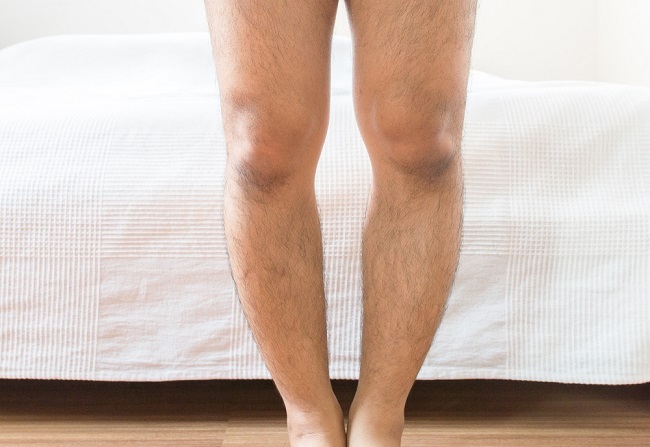Eshealthtips.com – Patients with knocked knees often present to a pediatric clinic with a knocked knee deformity. Usually, the condition is physiologic. Although it often resolves on its own, it can sometimes be a sign of an underlying skeletal disease. In these cases, formal treatment is necessary. However, a variety of treatments is available to help with the symptoms. Here are some of the options:
Causes of Genu Valgum
The underlying cause of genu valgum can be a variety of different conditions. The most common causes include malnutrition, infection, or traumatic injury. In addition, patients may present with a limp or balance problems when walking. While physiologic genu valgum often improves on its own, patients with pathologic conditions should seek medical attention. For example, in some cases, improper weight placement or the lack of an adequate gap between the knees may result in a knocked knee.
There are several treatment options for genu valgum. Orthotics are a common treatment option, but braces are often more effective. These braces are made to keep the bones in the right position and prevent them from growing incorrectly. Surgery is usually not the first choice, but should be considered if exercise and other methods fail to relieve the symptoms. For children with genu valgum, guided growth surgery may be an option. During this procedure, a small metal plate is inserted into the knee to align the bones and correct the deformity.

In addition to physical examination, a doctor may ask the patient about family medical history, pain, and other factors. The patient may also have an out-toed gait or lateral patellar subluxation. A careful clinical examination will help the physician determine the cause of the problem and what treatment will be most effective. In many cases, the pain will subside over time. The next step in determining a treatment option is obtaining a diagnosis.
Diagnosis of Genu Valgum
A diagnosis of genu valgum usually involves a thorough medical history and physical examination. The doctor will ask about the patient’s pain and walking pattern, and may also perform a X-ray or MRI scan. Once a diagnosis has been made, the physician will recommend a treatment plan. When the diagnosis is confirmed, a physician may prescribe medications or surgical treatment. This is a permanent, non-surgical procedure.
The symptoms of genu valgum range from slight to severe. A patient may have an obvious separation of the ankle when his or her knees are together. The lack of a gap between the knees can affect his or her gait, which may cause problems while walking. In addition to the symptoms of genu valgum, patients may also experience pain and difficulty walking. But the symptoms of genu valgum can be corrected by exercise.

The condition can affect walking and can result in a limp. In rare cases, the patient may feel pain while walking or running. A physical examination is necessary to diagnose the condition and determine any limitations. Some cases may be caused by underlying structural differences. It’s important to seek medical attention as soon as possible to make sure that you’re not experiencing the symptoms of genu valgum. This deformity is not a cause of a limb defect or an injury.
Affects Gait and Difficulty Walking
When your knees are close together, you might have genu valgum. If the gap between the knees is too wide, the condition may affect your gait. In addition, it may also affect your gait. Depending on the severity, you may be prone to an out-of-toe gait. In addition, the condition can cause difficulty walking or even cause you to fall. If you have genu valgum, you should seek medical attention for it immediately.
The diagnosis of genu valgum is often difficult because the exact cause of the condition is unclear. Symptoms include a limp, increased risk of falling, and pain. Your doctor may also perform a skeletal exam to confirm if you have genu valgum. For a more detailed diagnosis, your physician may need to examine your leg and take a detailed medical history. If you’re suffering from a limp, you should see a specialized pediatrician or consult a physical therapist.

When your knees are touching, it’s a sign that your knees are not fully separated. The lack of a gap can affect your gait. Your doctor may also notice a limp or balance issues when you walk. If you’re experiencing any of these symptoms, you should see a therapist immediately. The doctor will perform a physical exam and assess your gait. He or she may recommend a therapy plan that is suited to your needs.
Reference: